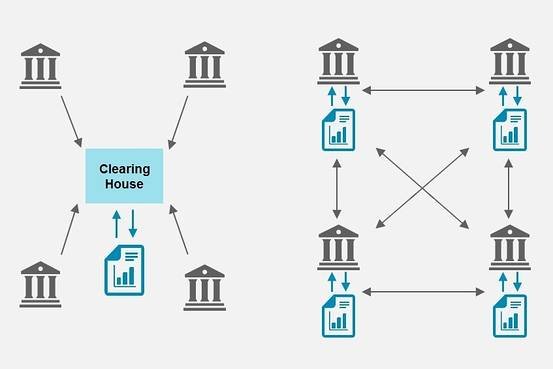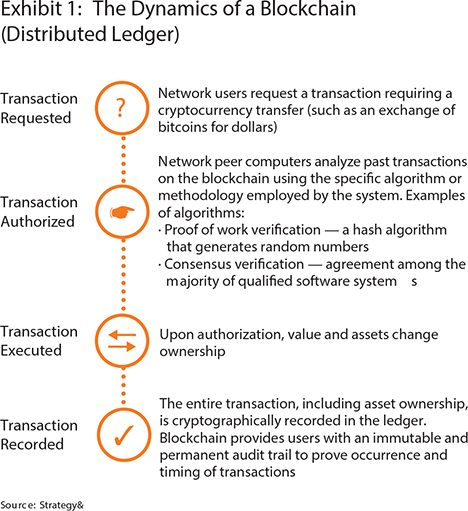Blockchain Basics
What is blockchain technology ?
Blockchain remains in the experimental and emerging technology. It is a data structure that makes it possible to create a digital ledger of transactions and share it among a distributed network of computers. It uses cryptography to allow each participant on the network to manipulate the ledger in a secure way without the need for a central authority. In otherwords, it is a distributed ledger structure with a distributed consensus process which ensures the integrity of the data exchanged among these billions of devices without going through a trusted third party.
This image I came across in an wall street journal article highlights the difference between conventional financial transactions (left) and a blockchain based transactions (right).
For a layman it means that blockchains enable us to send money directly and safely from me to you, without going through a third party i.e. a central bank, a clearing house, a credit card company, or PayPal.
Is it safe ?
I was reading a article on fortune.com and found this very easy to understand. I am quoting it below :
"Each blockchain, like the one that uses Bitcoin, is distributed: it runs on computers by volunteers around the world; there is no central database to hack. The blockchain is public: anyone can view it at any time because it resides on the network, not within a single institution charged with auditing transactions and keeping records. And the blockchain is encrypted: it uses heavy-duty encryption involving public and private keys–like the two-key system to access a safety deposit box–to maintain virtual security. You needn’t worry about the weak firewalls of Target or Home Depot, or a thieving staffer of Morgan Stanley or the U.S. federal government.
Every 10 minutes, all the transactions conducted are verified, cleared, and stored in a block that is linked to the preceding block, creating a chain. Each block must refer to the preceding block to be valid. This structure permanently time-stamps and stores exchanges of value, preventing anyone from altering the ledger. If you wanted to steal a Bitcoin, you’d have to rewrite the coin’s entire history on the blockchain in broad daylight. That’s practically impossible. So the blockchain is a distributed ledger representing a network consensus of every transaction that has ever occurred. Like the World Wide Web of information, it’s the World Wide Ledger of value—a distributed ledger that everyone can download and run on their personal computer."
This illustration will help you to understand the process better.


nice , like the the way you linked your post , i will remember that.
thanks
share the wealth